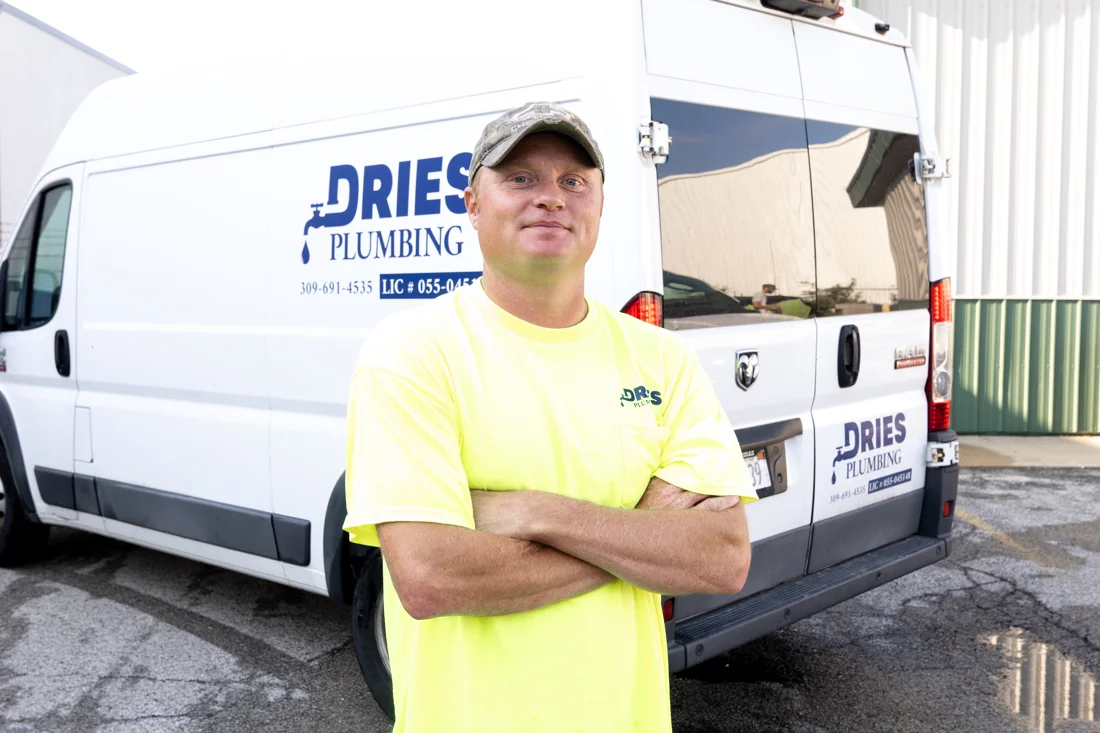Tankless Water Heater: Is It Money Well Spent?
Your teenager just emptied the hot water tank. Again. You’re standing in a freezing shower at 6:30 AM, watching your breath fog up while waiting for the water heater to do its job. Again.
If this sounds familiar, you’ve probably wondered about those tankless water heaters everyone talks about. They promise unlimited hot water and lower energy bills, but they cost more upfront. So what’s the real story?
Here’s what you need to know about costs, savings, and whether these systems deliver on their promises.
How Tankless Systems Work
Traditional water heaters work like slow cookers. They heat 40-50 gallons of water, then keep it hot 24/7, whether you’re home or not. That’s a lot of wasted energy.
Tankless units only heat water when you turn on the tap. Cold water flows through your unit, gets heated instantly by gas burners or electric elements, then flows to your faucet. No storage tank. No standby heat loss from keeping tank models heated around the clock.
There’s one catch, though. The water sitting in your pipes still needs to travel to the faucet first. So that “instant” hot water actually takes 30-60 seconds to arrive, depending on how far you are from the unit.
Tankless Water Heater Cost vs Long-Term Savings
What You’ll Pay Initially
Water heater installation cost for tankless systems runs 2-3 times higher than traditional water heaters. The unit itself is expensive, plus installation may require upgrading gas lines, electrical systems, or venting.
Electric tankless water heater models are more energy efficient than gas, but both beat traditional tanks by a wide margin.
The Energy Savings Reality
The U.S. Department of Energy reports 8-14% energy savings for homes using 41 gallons or less daily. For bigger households, savings drop to around 8%.
Most people recover their investment in 6-10 years through reduced operating costs. After that, it’s pure savings for the typical 20+ year lifespan of these units.
What You Gain and What You Give Up
Pros
- Never run out of hot water during back-to-back showers
- Take up minimal space – great for small utility rooms
- Longer lifespan than tank units with proper care
- No standby energy loss from keeping water hot 24/7
- Lower utility bills through improved efficiency
Cons
- Higher upfront costs
- Installation requirements more complex when switching from tank systems
- Hard water damages these units faster than traditional heaters
- May need a water softener for reliable operation
- 30-second delay for hot water, especially in the morning
Tankless Water Heater Installation: Simple or Complex?
Simple Swaps
Replacing an existing tankless unit takes one day. Disconnect the old one, mount the new one, and reconnect everything.
Major Overhauls
Converting from a tank system can mean relocating equipment, upgrading gas lines, possibly rewiring electrical systems, and modifying venting. This work requires permits and professional installation.
The process involves:
- Draining and removing your old tank
- Selecting the new location
- Upgrading gas, electric, or water lines as needed
- Mounting and connecting the new unit
- Testing everything and training you to operate
Get Your Free Tankless Assessment
Contact Dries Plumbing Today
button link to Contact Us page
Is Your Home the Right Fit?
The size of your property matters. Small households with modest hot water needs see the biggest savings. Large families might need multiple units or a high-capacity model.
Water quality matters more. Hard water clogs the heat exchangers and can significantly shorten equipment life. Most homes need water softening for reliable operation.
Your existing systems matter too. Older homes often need gas lines or electrical upgrades before installation becomes possible.
Common Mistakes That Cost Money
Buying too small saves money upfront, but guarantees disappointment. These units are sized by flow rate and rising temperature, not just price.
Ignoring water quality leads to expensive service calls and early replacement. Hard water deposits build up fast in the narrow passages of heat exchangers.
Trying a DIY installation often voids warranties and violates building codes. Gas line work and electrical connections require professional certification for good reason.
Why Professional Installation Matters
Proper sizing requires calculating your actual hot water demand, not guessing based on house size. The wrong size unit performs poorly regardless of quality.
Code compliance protects your family and preserves your home’s value. Permits and inspections aren’t optional for gas or electrical work.
Training makes the difference between satisfaction and frustration. These units display error codes and require specific maintenance. Knowing what they mean prevents service calls.
Dries Plumbing has handled water heater installations since 1933. Our crews understand the quirks of Central Illinois homes and specialize in Navien tankless systems, which offer reliable performance for our climate and water conditions.
Making Your Decision
Tankless water heaters excel in specific situations but disappoint in others. They work best for households with predictable usage patterns. Knowing how much water you use regularly ensures you choose the right size for your property.
For larger families or homes with hard water, the benefits diminish quickly. Multiple simultaneous showers can overwhelm smaller units, while mineral buildup shortens equipment life. Good water quality is critical to making this investment worthwhile.
Commercial properties like hotels and restaurants benefit most from unlimited capacity, but they need a professional assessment to determine the right number and size of units.
The math is straightforward: calculate your current water heating costs, subtract 8-14%, then see how long it takes to recover the installation cost. If the payback period works for your budget, tankless makes sense.
Ready to find out if tankless fits your situation? Dries Plumbing provides honest assessments based on your actual usage patterns and home conditions.
Contact us to discuss costs, benefits, and realistic expectations for your specific setup.
